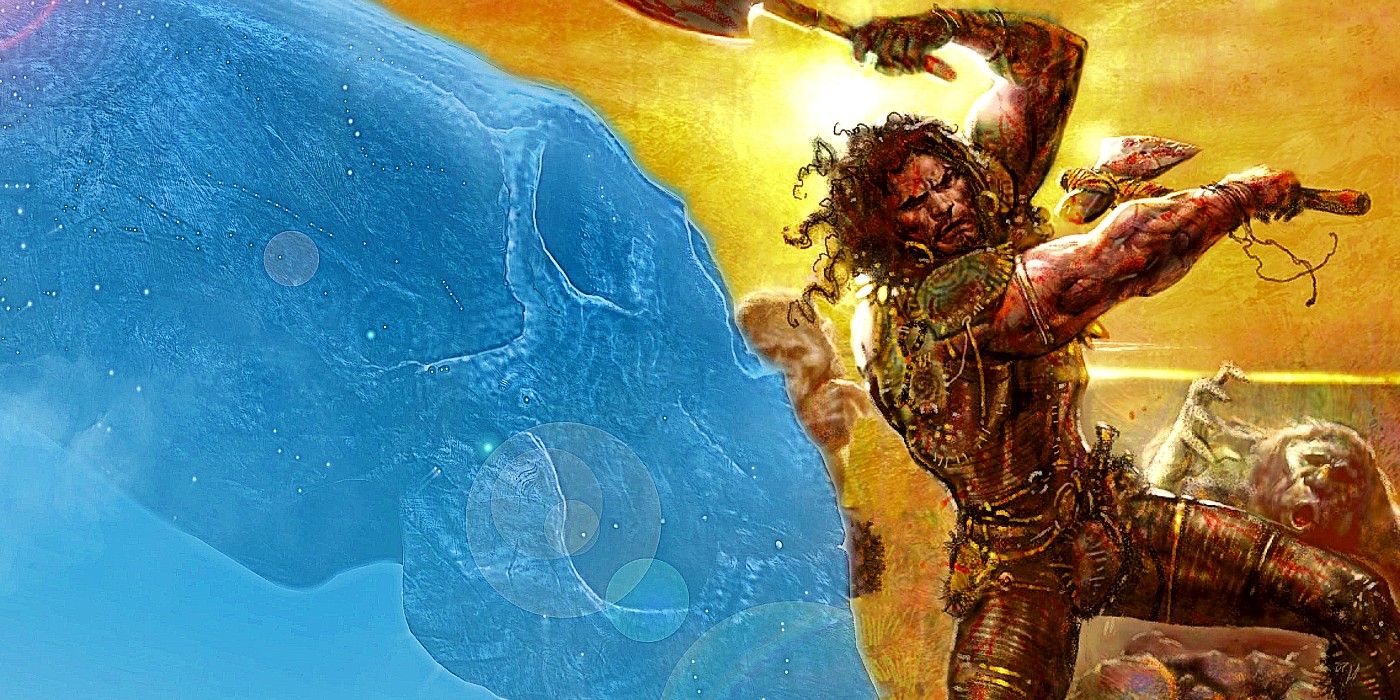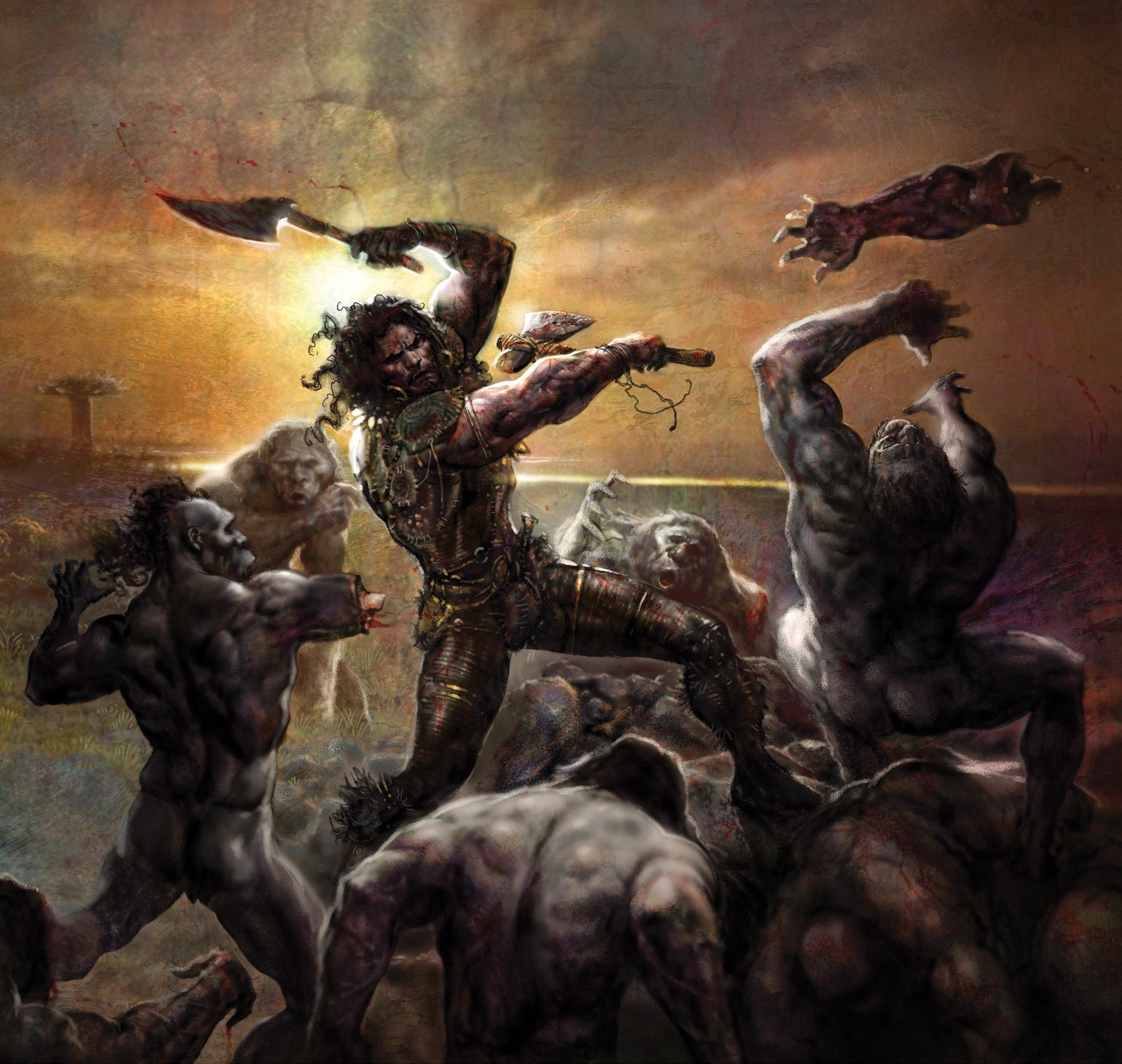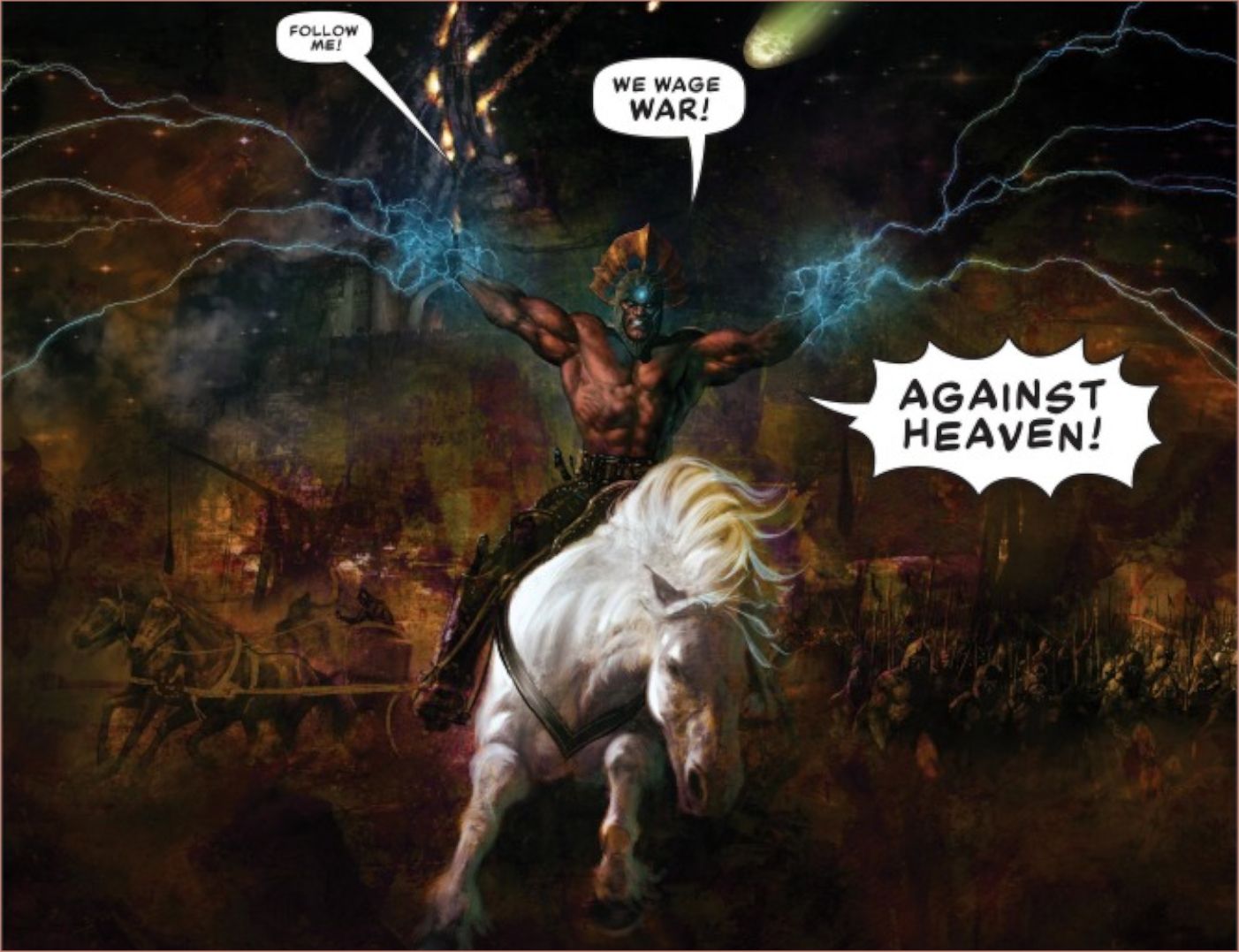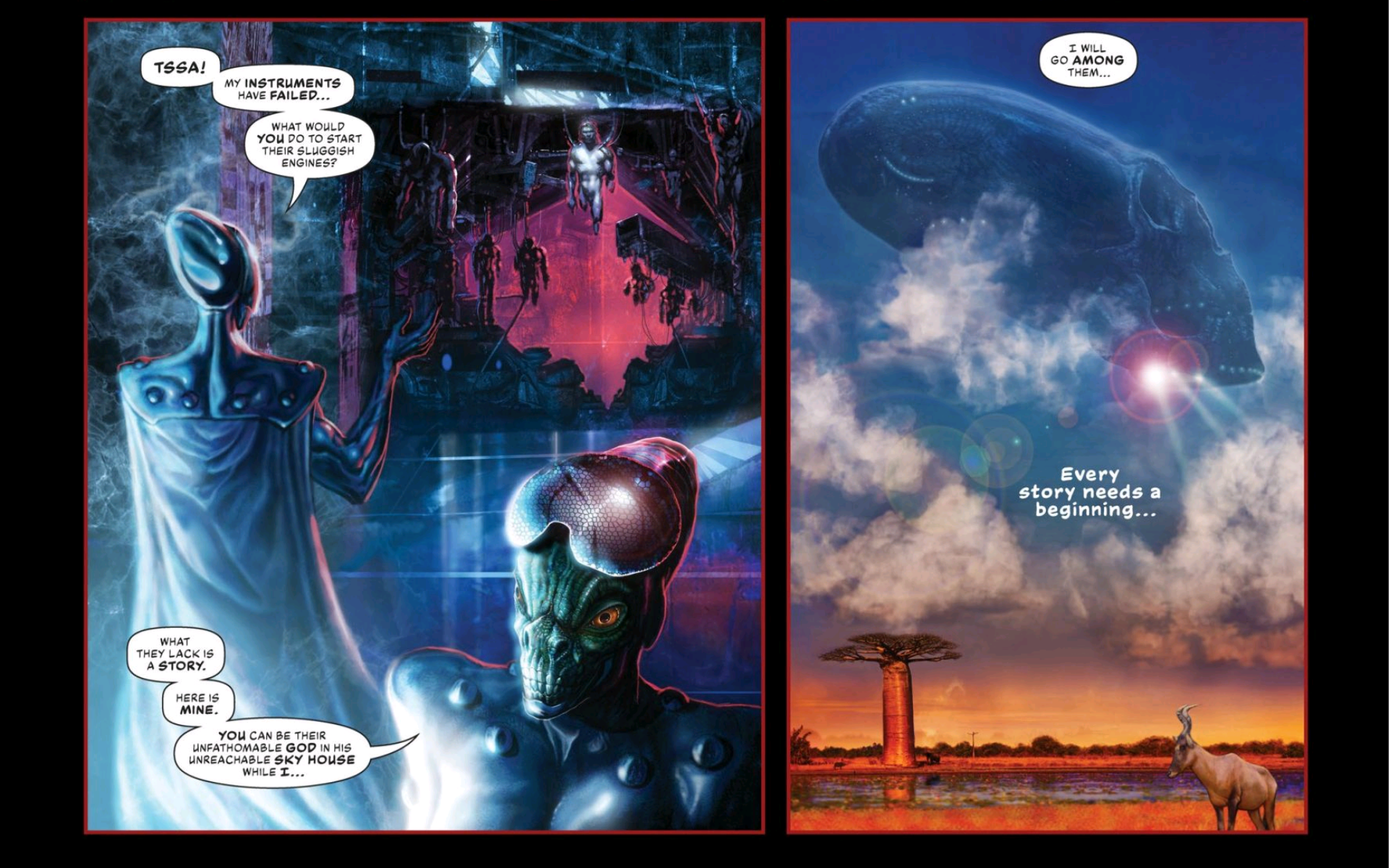Grant Morrison and Liam Sharp have just released their latest comic project, and it's breathtaking in its scope. The epic short Eden’s End manages to tell the secret history of man and superman in a mere fifteen pages.
Morrison launched a Substack newsletter at the beginning of 2022, where they have proceeded to provide annotations of their previous work in addition to running short comics and other projects. Morrison is now using the platform to launch their latest comics work with their Green Lantern collaborator Liam Sharp: a series of fifteen-page stories Morrison has dubbed “Hollywood pitch comics” in a densely-compressed format of square-shaped pages roughly the size of a 12” LP record. The series is called Xanaduum Presents, and Eden's End is the first installment: a sci-fi/fantasy parable about the origins of humanity itself.
EDEN'S END Tells The Story of Adaman, the First Superman
Written by Morrison — with art by Sharp and lettering by Roger Langridge — Eden’s End begins at the dawn of humanity. Readers learn that homo sapiens are the result of several experiments by the alien scientist Ha-Shatan and his apprentice Lilitu. After Ha-Shatan’s experiments fail to yield positive results, Lilitu proposes a more direct approach. She lives among the early humans and seduces their leader Adaman with an apple that will give him knowledge and power beyond imagination. Adaman becomes the first hero and king, a "superman" who builds a vast empire powered by electricity generated from his own hands. In spite of all this, it isn’t long before Adaman begins to resent the alien “gods” who disturbed his simple existence and decides to use his vast power to wage war on Heaven.
The familiar story detailed above shouldn’t be surprising, given the title Eden's End. Morrison and Sharp draw on a wide breadth of world religion and mythology in crafting their own creation myth. Ha-Shatan and Lilitu are likely stand-ins for Satan and Lilith, but Morrison’s allegories are varied enough to contain multiple interpretations influenced by Judaism, Islam, the ancient Sumerian Epic of Gilgamesh, and even the “reptilian men” conspiracy theories popularized by David Icke. These sources combine to present a science-fiction parable that is just as much a meditation on the act of creation as it is a barbarian superhero origin story.
Much of the comic’s condensed approach to storytelling works because of Sharp’s powerful renderings. Sharp’s artwork is the culmination of the painted barbarian worlds found in the works of Frank Frazetta and Richard Corben, brimming with enough sex and violence to make even the most explicit episode of Game of Thrones blush. As presented in the square-shaped “album cover” format, Sharp condenses a great amount of story into each page, with even the most minor of details carrying thematic weight. Adaman’s robes being colored in red, blue ,and yellow is one such detail, as these three primary (or "primitive") colors were once believed to be the source of all others. It's also a clever nod to the palette of Superman's costume, and once more hammers home how Eden’s End has been shaped by various myths that combine here into the ultimate creation story.
EDEN’S END Is A Sci-Fi/Fantasy Take On Creation
For Morrison and Sharp, the whole endeavor appears to be commentary on the very act of creation itself, as they interweave various classical myths with the arrival of human consciousness. Eden’s End draws a clear parallel between the moment homo sapiens gained existential knowledge to the moment they began telling stories. This then brings to mind classic presentations of Promethean fire, the biblical fruit from the Tree of Knowledge, and the goddess Inanna/Ishtar’s huluppu tree from the Epic of Gilgamesh. “That’s the trouble with stories, you see, and with fire,” Ha-Shatan comments to his apprentice Lilitu after she successfully seduces Adaman. “Once started, they get so easily out of hand…” The power of knowledge, of course, is nothing more than information… and what are stories if not vessels to transport information from one person to the next? It’s a great power, and thus one that comes with the burden of great responsibility.
While the sheer amount of ideas and concepts presented in the fifteen pages of Eden’s End is staggering, the comic also presents an interesting challenge when reviewing the piece as a story in and of itself. By the artists’ own admission, Eden’s End is designed more as a pitch showing off the promise of a larger story and not necessarily as a full narrative. As such, the brevity of Eden’s End leaves the emotional content rather cold, as the characters come off more like pieces on a chess board as opposed to fully-fleshed out beings with arcs.
Of course, Morrison and Sharp are able to work in glimpses of brief, powerful character work. Still, whether it's the heartbreaking moment when Adaman’s partner witnesses him giving in to Lilitu’s seduction or Adaman himself longing for simpler times, these moments feel more like interesting tidbits to be developed later on in a larger work. As such, Eden’s End is ultimately more of a creative exercise as opposed to a full narrative experience.
Who Are the Alien “Gods” of EDEN’S END?
Despite this, it's still impressive how much Morrison and Sharp are able to convey in the short form of Eden’s End. This comic is ultimately the work of two masters at the height of their craft, searching for different ways to present their story ideas to the public. By combining various creation myths throughout time into a science-fiction superhero parable, Grant Morrison and Liam Sharp have created their own compelling origin of humanity in Eden’s End: a meditation on language, storytelling, and the very act of creation itself.
Xanaduum Presents: Eden’s End #1 is available now from Xanaduum.




